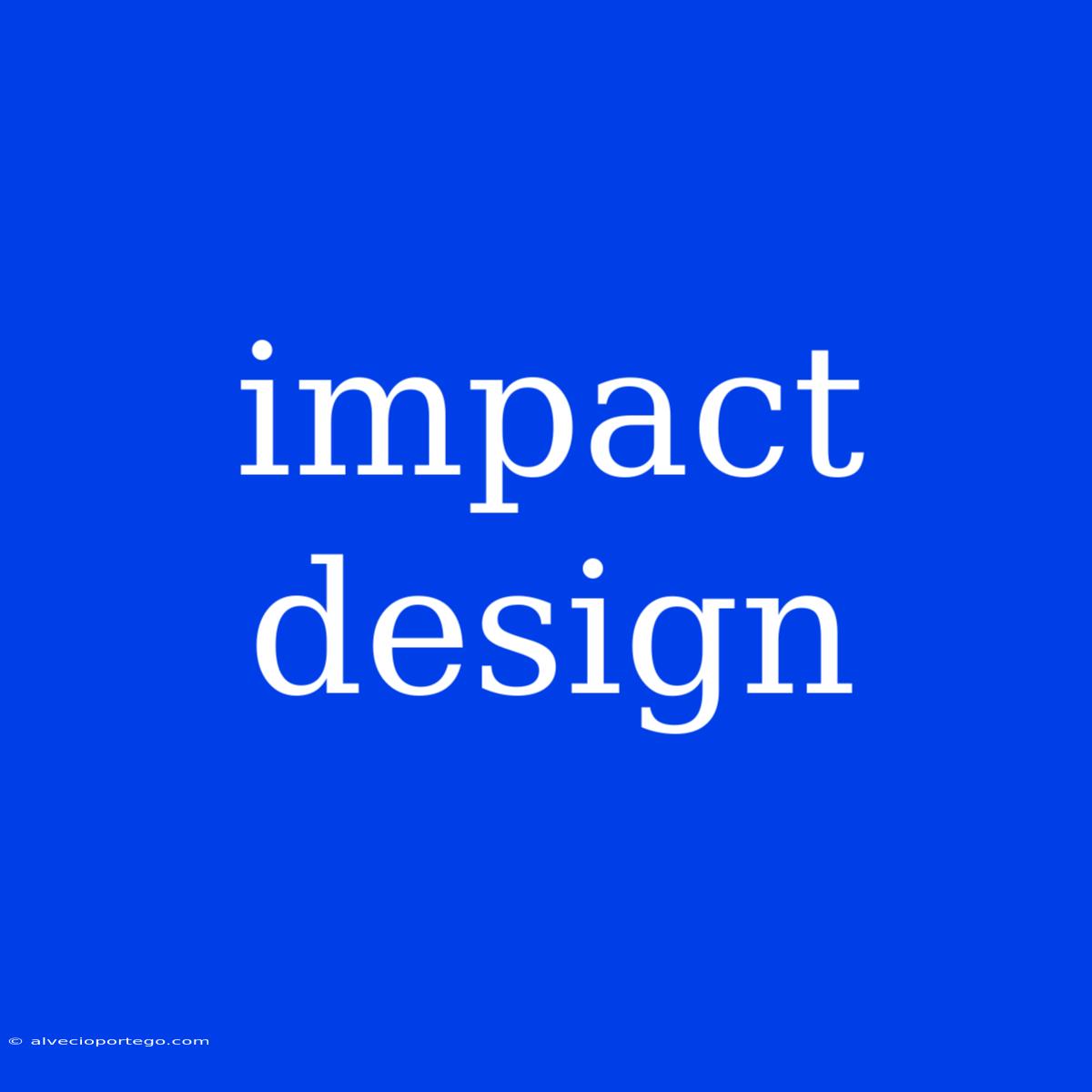Impact Design: Shaping the World for Good
Impact design is a growing field that focuses on creating products, services, and experiences that have a positive impact on people and the planet. It goes beyond simply making something beautiful or functional, instead striving to address real-world problems and create lasting, meaningful change.
Beyond Aesthetics: The Core of Impact Design
At its heart, impact design is driven by a deep understanding of user needs and a commitment to addressing social and environmental challenges. It involves:
- Empathy and Research: Deeply understanding the needs and perspectives of the intended users and the broader context in which the design will exist.
- Problem-Solving: Identifying and addressing complex problems with innovative solutions that are both effective and sustainable.
- Collaboration: Working with diverse stakeholders, including users, communities, and experts, to co-create solutions and ensure their long-term viability.
- Measurement and Evaluation: Tracking the impact of designs and using data to inform continuous improvement and measure success.
Impact Design in Action: Examples Across Industries
Impact design is not limited to a single industry. Here are a few examples of how it's being used to create positive change:
1. Healthcare:
- Designing accessible medical devices: Developing prosthetics and assistive technologies that are affordable, user-friendly, and culturally sensitive.
- Improving patient experiences: Creating healthcare environments that are welcoming, comfortable, and supportive.
- Developing remote healthcare solutions: Designing telemedicine platforms to provide healthcare access to remote or underserved populations.
2. Education:
- Creating engaging and inclusive learning experiences: Developing educational tools and technologies that cater to diverse learning styles and needs.
- Promoting access to education: Designing affordable and accessible learning materials for low-income communities.
- Developing personalized learning pathways: Creating adaptive learning platforms that tailor content to individual needs and progress.
3. Environmental Sustainability:
- Designing eco-friendly packaging: Creating packaging solutions that are reusable, recyclable, or biodegradable.
- Developing sustainable building materials: Innovating with bio-based and recycled materials to reduce environmental impact.
- Promoting responsible consumption: Designing products that are durable, repairable, and encourage responsible use.
The Future of Impact Design
As awareness of social and environmental challenges grows, impact design is poised to play an increasingly vital role in shaping a more sustainable and equitable future.
Here are some key trends to watch:
- The rise of circular economy design: Focusing on designing products that can be reused, repaired, and recycled to minimize waste.
- The integration of technology: Leveraging technology to create innovative solutions and connect people to resources.
- The emphasis on inclusive design: Ensuring that products and services are accessible and relevant to all users, regardless of their background or ability.
Impact design is not just about creating good products; it's about building a better world. By embracing its principles and incorporating them into our design practices, we can create a future where design is a force for good, driving positive change for generations to come.

